Table of contents
Lemon balm ( Melissa officinalis L.) is the best known of the four species of lemon balm ( Melissa ). Raw lemon balm in particular contains medicinally effective essential oil with digestive, antimicrobial and relaxing properties.
Use in the kitchen
Can you eat lemon balm raw? In the kitchen, the delicate, lemony-aromatic leaves are best used raw. When cooked, lemon balm leaves lose their refreshing aroma and their intense lemon scent. It is best to add the finely chopped or plucked shoots shortly before serving. Lemon balm is particularly aromatic before it flowers. 1.10
What can you do with lemon balm? The leaves and flowers of lemon balm add a touch of flavor to salads, quark, raw vegetables, herbal soups, sauces, mushroom dishes and chutneys. The mild lemon aroma of lemon balm also goes well with sweet dishes such as desserts, fruit salads, jelly, jam or compote. Lemon balm sorbet, lemon balm syrup, wild plant lemonade, punch or lemon balm tea on ice are refreshing. Fresh leaves can be preserved in oil or vinegar. Fresh or dried leaves are suitable as a seasoning ingredient. 1,12
Vegan recipe for pesto with lemon balm leaves
Ingredients: 150 g lemon balm leaves, 50 g walnuts, 50 ml cold-pressed rapeseed oil, 2 cloves of garlic and salt.
Preparation: Puree the nuts (preferably unroasted) with lemon balm leaves and garlic. Meanwhile, slowly pour in the oil. Beat until the mixture is smooth, then season with salt .
Vegan recipe for herbal lemonade with lemon balm
Ingredients: 250 ml water, 20 g lemon balm leaves, 250 ml apple juice .
Preparation: Boil lemon balm with water and apple juice and let the mixture steep for at least 30 minutes. The herbal lemonade can be stored in the refrigerator for three to four days if it is tightly sealed.
Tea preparation
To prepare a For lemon balm tea with fresh leaves, you need two handfuls of lemon balm per liter. Allow the infusion to brew for about 20 minutes. 3 If you use dried lemon balm leaves, pour boiling water over 1.5-4 g (1 tsp = 1 g) of finely chopped leaves and cover the container. After letting it brew for 5 to 10 minutes, strain the tea. 7 Drink lemon balm tea several times a day throughout the day or a cup in the evening to benefit from its antispasmodic effect. 6
In general, lemon balm tea made from fresh leaves is preferable to tea made from dried leaves. 5.10
Vegan recipes with lemon balm can be found under the note: " Recipes that have the most of this ingredient ".
| Not only vegans or vegetarians should read this: Vegans often eat unhealthily. Avoidable nutritional errors . |
Purchasing - Storage
Lemon balm tea is available from major retailers such as Coop , Migros , Spar , Aldi, Lidl , Rewe , Edeka , Billa, Volg , Denner or Hofer or in organic supermarkets such as Denn's Biomarkt or Alnatura - packaged in tea bags as part of a tea blend or as a single-variety product. In pharmacies, drugstores, organic shops or health food stores, lemon balm can be bought in single varieties and as loose tea, also in controlled organic quality.
Lemon balm is a component of many approved standard tea blends, containing up to 30 g/100 g. The medicinal plant is contained in gastrointestinal teas (lemon balm, peppermint, camomile) or in calming teas, sleep teas and nerve teas (lemon balm, valerian, St. John's wort, hops, lavender). 7,8
Lemon balm can be bought as a potted plant or freshly cut. It is important to look for fresh quality with firm stems and leaves.
There are numerous phytopharmacological ready-made preparations available in drugstores, pharmacies or online. Lemon balm leaf extracts such as fresh plant extracts, distillates, oils, dry, thick and fluid extracts as well as combination preparations can be found in the product groups sedatives (calming medicines), spasmolytics (antispasmodic medicines) and flu remedies. 7
Real lemon balm oil is rarely available commercially, as the content in the leaves is very low and the price is high. Oils with a similar composition (from Cymbopogon species, Poaceae) are available commercially as "Indian lemon balm oil". 7 When buying finished medicinal products, pay attention to the declaration. Citronella oil is also a popular substitute for lemon balm oil. 9
Lemon balm flowers are a particular rarity. The essential flower oil contains around 160 components and has a different composition than the essential oil of the leaves. 5
There is a wide range of "lemon balm spirits" available on the market, although these only contain a small amount of distilled lemon balm leaves. Due to their high alcohol content, these preparations are not always medically justified. A lemon balm tincture, on the other hand, is useful and at the same time more effective than lemon balm spirit and even lemon balm tea, as the concentration of medicinally effective essential oils in the tincture is higher. 6
The availability of lemon balm varies depending on the size of the store, catchment area, etc. Our recorded food prices for the DA-CH countries can be found above under the ingredient image - and by clicking on them you can see their development at various suppliers.
Found in the wild
In Central Europe, wild lemon balm is found mainly in nutrient-rich herbaceous areas, for example in forest clearings and on forest roads. It prefers a nutrient-rich, warm and dry location with humus-rich, sandy or loamy soil. 1.10
The perennial and herbaceous lemon balm reaches heights of up to 1.5 meters. It is characterized by its hairy structure and exudes a distinct lemon scent when touched. 3 The leaves are arranged opposite each other. The edge of the leaves is large and regularly notched. Short, underground runners grow from the rhizome. 3,10 The flowers grow in semi-whorls and can be pale yellow, white, pink and, rarely, violet or bluish. Lemon balm has small seeds. 10
Since lemon balm is most aromatic before it flowers, the main harvest of the leaves takes place before the flowering period in June to July. 15 Lemon balm leaves are generally in season from May to September . 11,17
Storage tips
Drying herbs is the oldest and simplest method of preservation. Dried herbs can be kept for up to a year. Be guided by the color change and the taste. Dried lemon balm leaves should be stored in airtight containers protected from light, heat and moisture. 13,14 Suitable containers are brown glass jars or metal cans, but plastic containers are unsuitable. Plastic containers usually have their own smell and can affect the aroma of the herbs - especially if they are rich in essential oils. 14
How do you dry herbs? Spread the herbs thinly over a large area in a shady but airy place. The herbs are dry when the plant is brittle. You can check this by rubbing the leaves between your fingers to see if they break. 14 Lemon balm can also be dried by hanging it in bunches and removing the leaves when dry. 10
Fresh leaves should be used quickly. 12 They can be placed in a container of water for a few days like cut flowers.
Can you freeze fresh lemon balm? Freezing is an alternative to drying. Chop up the lemon balm and pack it in portions in foil bags or ice cube trays. Cover the leaves in the ice cube trays with water. 10, 12,14 In addition to lemon balm, basil, tarragon, dill, parsley, chives and thyme are also suitable herbs for freezing. 14
Ingredients - Nutritional value - Calories
The energy content of lemon balm is 48 kcal/100g. Fat is barely present at 0.8 g/100g. The protein content is 3.5 g/100g and carbohydrates 8 g/100g, of which 5 g are sugar. Thefiber content is 3 g/100 g. 4
With 1000 μg/100g (125% of the daily requirement), lemon balm is particularly rich in vitamin A, as RAE, even if you only take a small amount of it. Carrot juice (956 μg) and sweet potatoes (709 μg) also have a similarly high vitamin A content. Fenugreek leaves contain even more vitamin A when eaten raw (2104 μg/100g). 4
Lemon balm is in the middle range with a content of 45 mg of vitamin C (ascorbic acid) per 100 g. Lemons (53 mg/100g) and lemon juice (39 mg/100g) have similar vitamin C values. Yellow bell peppers (184 mg/100g) and stinging nettles (333 mg/100g) are particularly rich in vitamin C. 4
Lemon balm has 0.5 mg/100g of manganese, the same amount as lovage . Sage (4 mg/100g), pecans (4.5 mg/100g) and hazelnuts (6.2 mg/100g) have higher manganese contents. 4 Manganese is important for healthy cartilage tissue. A balanced diet that also contains nuts and seeds will easily cover your needs.
The complete ingredients of lemon balm, the coverage of the daily requirement and comparison values with other ingredients can be found in our nutrient tables. In the article Nutrients explained you will get a detailed insight into the topic.
Health effects
What is lemon balm tea good for? The tea has a calming and antispasmodic effect and can be used for sleep disorders and gastrointestinal complaints. 15 For nervous stomach pains, lemon balm can be prepared with chamomile, caraway, fennel and anise . A harmonious mixture for moments of relaxation is the combination of lemon balm with green or white tea. 9 The medicinally effective lemon balm oil also has a relaxing effect on the intestinal muscles. 7,8
Secondary plant substances
Many of the health effects of lemon balm can be attributed to the secondary plant substances it contains. Our article on secondary plant substances provides an overview of the classification of substance groups, their occurrence in foods and possible effects on humans. Lemon balm contains the following secondary plant substances, among others: 22,27
- Isoprenoids: Monoterpenes (alpha-pinene, citronellal, citral, neral, ocimene, linalool, geranial, geranyl acetate, geraniol, verbenol, menthol), monoterpenoids aldehydes, monoterpenes glycosides; Sesquiterpenes (patchoulene, beta-caryophyllene, caryophyllene oxide, germacrene D), sesquiterpenoids (alpha-cadinol, alpha-copaene), triterpenes (betulinic acid, ursalic acid, oleanolic acid, saponins)
- Polyphenols: Phenolic acids: hydroxybenzoic acids (protocatechin and gallic acid), hydroxycinnamic acids (rosemary, caffeic, caftaric, chlorogenic, ferulic and p-coumaric acid); flavonoids: flavonols (quercitrin, rhamnocitrin, hyperoside, isoquercetin, kaempferol, myricetin, quercetin, rutin), flavanols (hyperoside), anthocyanins, flavones (apigenin, luteolin, cynaroside), isoflavones (daidzein); tannins
- Other organic compounds: alcohols (isogeraniol), esters (nerol acetate)
However, it should be noted that the composition of the secondary plant substances in lemon balm can vary depending on the time of harvest and the growing conditions. Therefore, quantities are only of limited use and should only be understood roughly.
In addition to volatile compounds such as essential oils (monoterpenes, monoterpenoid aldehydes, monoterpenoid glycosides, sesquiterpenes and terpenoids, alcohols, esters), Melissa officinalis contains non-volatile compounds such as triterpenes (ursolic and oleanolic acid) and phenolic compounds including phenolic acids, flavonoids and tannins. The essential oil of Melissa officinalis is obtained from the fresh or dried flowers, leaves and branches by steam distillation or chemical extraction. The content of essential oils in lemon balm extracts varies between 0.01 and 0.72%. The essential oil is characterized by a fresh lemon smell and a light yellow color. The citrus-like aroma is based on the main components citral, citronellal, neral and geranyl acetate. Phenolic acids are important bioactive components of Melissa officinalis, including rosmarinic, caffeic, chlorogenic and ferulic acids. Rosmarinic acid is present in the highest amounts (86,637.60 mg/100g). 22,27
What is lemon balm extract good for? In vivo and in vitro studies, lemon balm extracts have shown numerous positive health effects, including growth-inhibiting, antitumor, antioxidant, antidiabetic, antidepressant, antiviral, antimicrobial, pain-relieving, neuroprotective properties and protection against cardiovascular diseases. These effects are mainly attributed to the phenolic profile and the flavonoids. Further studies are required to determine the exact active components. In animal experiments, lemon balm has been found to have analgesic and sedative effects. An antiulcer effect has also been confirmed histologically. This is probably due to the antioxidant properties of the flavonoids. 22,27
Aqueous lemon balm extracts have an antiviral effect, including against herpes simplex, influenza and the so-called myxoviruses. The extract inhibits virus adsorption (the virus attaching itself to the skin) and prevents the virus from penetrating the cell. 7,22 Controlled clinical studies have shown the effectiveness of local application of lemon balm leaf extract for herpes labialis. Lemon balm tea is not sufficient for antiviral therapy. Creams containing a standardized extract with a constant minimum content of rosmarinic acid are used instead. 5,22
Standardization of lemon balm leaf extracts is necessary because there are significant differences in the content of rosmarinic acid, tannins and total flavonoids. 15 These differences also explain the different effectiveness of homemade lemon balm leaf teas. 5 According to the European Pharmacopoeia, the content of rosmarinic acid must be at least 1%. 7,23
Dangers - Intolerances - Side Effects
Contraindications, side effects or interactions due to applications with lemon balm are not known. 5
The essential lemon balm oil should only be used diluted, as it can cause irritation of the skin and mucous membranes. 8
Possible confusion
Lemon balm can be confused with lemon mint. Unlike mint, lemon balm usually has white flowers and no reddish stem. There is no real danger, as the plants mentioned are also edible. Lemon balm can be distinguished from other types of balm thanks to its lemony aroma. 3,10 However, only the species Melissa officinalis is widespread in Europe. 2
Use as a recognized medicinal plant
In 1988, the Association of German Druggists named lemon balm the medicinal plant of the year. 19 Today, the leaves (Melissae folium) and the essential oil (Melissae aetheroleum) are used as pharmaceutical drugs. 15
The HMPC has recognised lemon balm as a herbal medicinal product for traditional use to relieve mild stress symptoms, as a sleep aid and for mild spasmodic gastrointestinal complaints. 7,15,18
The indications for ESCOP include tension, restlessness and irritability. Lemon balm can be used for the symptomatic treatment of digestive problems and externally for cold sores. 7,10,15
Commission E recognizes the use of lemon balm for nervous sleep disorders and functional gastrointestinal problems. 7,15
The dosage of lemon balm in tea for treating ailments is about 1.5 - 4.5 g of the drug per cup of infusion. It can be taken several times a day as needed. 15
Folk medicine - natural medicine
The ancient Greeks and Romans valued lemon balm as a medicinal and spice plant. Since the 15th century, lemon balm has been used as a calming, antispasmodic, digestive and carminative agent. The traditional medicinal plant is also used for colds and flu as a diaphoretic, nerve-calming and strengthening agent. Functional circulatory weakness, nervous palpitations, restlessness, irritability, migraines, hysteria, melancholy, gout, rheumatism and a nervous stomach are other indications for use in folk medicine. 10,15 Lemon balm tea works together with other calming herbs such as valerian, St. John's wort, passion flower and hops for sleep disorders and gastrointestinal complaints. 15
Due to its antispasmodic effect, lemon balm is used for all complaints that are caused by cramps, such as menstrual cramps, headaches, cramps. 6,7,10
Applied externally, lemon balm can help with insect bites, wounds, ulcers, bruises, contusions, earaches and toothaches. 1,9,10
Baths with lemon balm are used for inflammation of the skin and genital organs or for relaxation. To use as a bath, boil 50-60 g of lemon balm leaves with 1 liter of water and let it steep for 10 minutes. The strained brew is added to a full bath. 6
Ecological footprint - animal welfare
There is little information about the carbon footprint of lemon balm. The figures for peppermint show that such herbs have a low footprint of 0.65 kg CO 2 eq/kg. 24
Vegetables, one of the most climate-friendly foods, have a CO 2 footprint of around 0.1-0.5 kg CO 2 eq/kg (excluding transport), depending on the cultivation method. 25 The average CO 2 footprint of plant-based foods is 0.66 kg CO 2 eq/kg, which is only 10.7% of the average CO 2 emissions of animal products (6.15 kg CO 2 eq/kg). 26 To keep climate-damaging emissions to a minimum, it is best to eliminate animal products from your diet.
Despite extensive research, we do not have any concrete figures on the water footprint of lemon balm. Vegetables, at 300 l/kg, have a significantly lower water consumption than fruit (1000 l/kg) or spices (7000 l/kg). 28
For detailed explanations of various sustainability indicators (such as ecological footprint, CO2 footprint, water footprint), see our article: What does the ecological footprint mean?
Animal protection - species protection
Lemon balm is a useful plant to grow in the garden. The lemon balm flowers in particular are known to attract bees. In ancient times, lemon balm was grown as a bee pasture. 10,11 Rubbing the flowers on the inside of empty beehives even attracts new bee colonies. Lemon balm also attracts other useful insects, such as parasitic wasps and caterpillar flies, which combat many garden pests. 21
Worldwide occurrence - cultivation
Lemon balm ( Melissa officinalis ) originally comes from southern Europe. 10 Its natural range extends from Anatolia through the Caucasus, Iraq and Iran to Pakistan. Today, lemon balm is widespread in temperate and warm regions worldwide and regularly grows wild there. 2.7
Growing your own
Lemon balm can be grown in a warm, partially shaded and protected location in the garden or as a pot plant. The soil should be well-drained and sandy-loamy. Compost or mulch are suitable as fertilizer. 7,12,15
As a hardy plant, the plant should be cut back to 10 cm above the ground before the first flowers appear in spring. The urge to produce new shoots is particularly strong and the lemon balm tastes most aromatic at this time. You can harvest two or three times by the end of September. 12.15 It is best to harvest lemon balm on a clear, warm day to achieve the highest concentration of essential oil. 15
Cultivation - Harvest
For commercial use, lemon balm is not propagated from seeds, but from softwood cuttings. The cuttings are left in the shade for 4-5 weeks before being planted in the field. 21 After 6 months, the above-ground parts of the plant are harvested. Harvesting for the production of essential oil takes place shortly before flowering. Brown spots reduce the quality of the leaves. 21
As a perennial crop, lemon balm has a lifespan of about 10 years. However, the crop rotation is changed to legumes every 5 years to rejuvenate the soil. Increased nitrogen use during the growing season increased the yield and oil production of lemon balm. Fertilizing after harvest promotes the growth of new shoots. Weekly watering is necessary because the plants have a very high water requirement. 21
Lemon balm is grown in Central Europe, Western Europe (especially Spain and southern France) and Eastern Europe. Imports come from the regions mentioned. 7.15
Further information
What is the difference between lemon balm and melissa? The melissa ( Melissa ) is a genus of plants in the mint family (Lamiaceae). The best-known species of melissa is lemon balm ( Melissa officinalis L.). 2,12 It is also called M. officinalis ssp. officinalis, another subspecies is M. officinalis ssp. altissima, which grows mainly in New Zealand and is known there as bush balm. 10 There are also the species Melissa axillaris, Melissa flava and Melissa yunnanensis, which are widespread in Asia. 2
The genus name Melissa is related to ancient Greek meli (= honey), melissa / melitta (= honey bee) and meliteia (= bee herb, lemon balm; probably derived from meliteion, a type of mead used by the Greeks). 10, 16 The name refers to the use of the plant as a bee pasture. The species suffix officinalis means official (medicinal) or used as a medicine. 20
Alternative names
Alternative names for lemon balm are garden balm, lemon herb, women's herb, citronelle or heart herb.
In English, lemon balm is called melissa and lemon balm is called balm, sweet balm, lemon balm, common balm, English balm, garden balm, balmmint, heart's delight and honey plant.
Bibliography - 28 Sources (Link to the evidence)
| 1. | Fleischhauer SG, Guthmann J, Spiegelberger R. Enzyklopädie. Essbare Wildpflanzen. 2000 Pflanzen Mitteleuropas. 1. Auflage. Aarau; 2013. |
| 2. | Royal Botanic Gardens Kew. Melissa L. |
| 3. | Abdel-Naime W, Fahim J, Fouad M, Kamel M. Botanical studies on the stem and root of Melissa officinalis L. (Lemon balm). Journal of advanced Biomedical and Pharmaceutical Sciences. 2020;0(0):0–0. |
| 4. | USDA U.S. Department of Agriculture. |
| 5. | Schilcher H, Kammerer S, Wegener T. Leitfaden Phytotherapie. 3. Auflage. München; 2007. |
| 6. | Niederegger O, Mayr C. Heilpflanzen der Alpen. Gesundheit aus der Natur von A bis Z. Innsbruck; 2006. |
| 7. | Blaschek W. (Herausgeber). Wichtl –Teedrogen und Phytopharmaka. Ein Handbuch für die Praxis. 6. Auflage. Stuttgart; 2016. Wissenschaftliche Verlagsgesellschaft mbH. |
| 8. | Apotheken-Umschau. Zitronenmelisse. |
| 9. | Gerhard I, von Ganski, N. Die neue Pflanzenheilkunde für Frauen. 1. Auflage. München; 2011. |
| 10. | The Herb Society of America. Lemon Balm: An Herb Society of America Guide. 2007. |
| 11. | Kremer, BP. Mein Garten – Ein Bienenparadies. 2. Auflage. Bern; 2018. |
| 12. | Bundeszentrum für Ernährung. Zitronenmelisse. 2021. |
| 13. | American Institut for Cancer Research. How long do jars of spices and dried herbs last? 2015 |
| 14. | UGB. Kräuter trocknen: Sommerliche Vielfalt aufbewahren. 2010 |
| 15. | Heilpflanzenlexikon -Awl.ch: Melisse, Zitronenmelisse – Melissa officinalis. |
| 16. | Hertling B. Das beste Kraut für das Herz. Deutsche Heilpraktiker-Zeitschrift. 2017;12(08):56-58. |
| 17. | RHS. How to grow lemon balm. |
| 18. | European Medicines Agency. Melissae folium - herbal medicinal product. |
| 19. | Pascoe. Arzneipflanze des Jahres. 2024 |
| 20. | Miriam Webster. Officinal. |
| 21. | Singh V, Prawal P. Lemon balm (Melissa officinalis L.) an herbal medicinal plant with broad therapeutic uses and cultivation practices: a review. International Journal of Recent Advances in Multidisciplinary Research. 2015;2:928-933. |
| 22. | Miraj S, Rafieian-Kopaei, Kiani S. Melissa officinalis l: a review study with an antioxidant prospective. J Evid Based Complementary Altern Med. 2017;22(3):385–394. |
| 23. | Kittler J, Krüger H et al. Evaluation of 28 balm and lemon balm (Melissa officinalis) accessions for content and composition of essential oil and content of rosmarinic acid. Journal of Medicinal Plants and By-products. 2018;65(3):745–757. |
| 24. | Carboncloud. Peppermint. 2024. |
| 25. | Pereira B de J, Cecílio Filho AB et al. Greenhouse gas emissions and carbon footprint of cucumber, tomato and lettuce production using two cropping systems. Journal of Cleaner Production. 2021;282:124517. |
| 26. | Feng S, Lakshmanan P et al. A comprehensive continental-scale analysis of carbon footprint of food production: Comparing continents around the world. Journal of Cleaner Production. 2023;426:138939. |
| 27. | Petrisor G, Motelica L et al. Melissa officinalis: composition, pharmacological effects and derived release systems—a review. Int J Mol Sci. 2022 Mar 25;23(7):3591. |
| 28. | Mekonnen MM, Hoekstra AY. The green, blue and grey water footprint of crops and derived crop products. Hydrol Earth Syst Sci. 2011;15(5):1577–1600. |

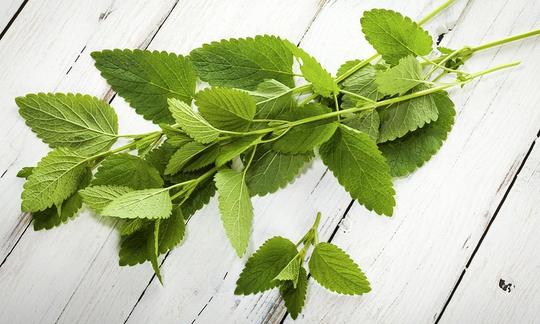

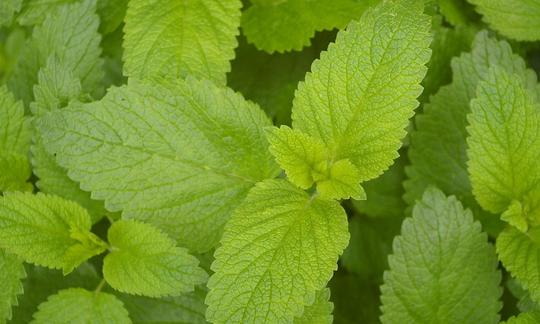

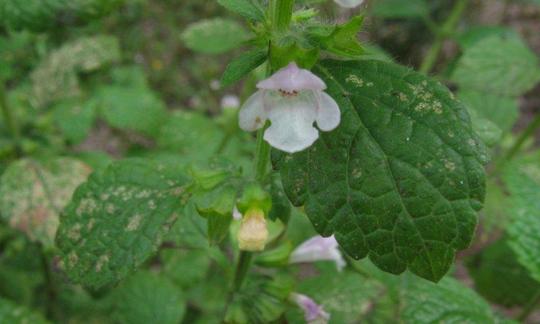

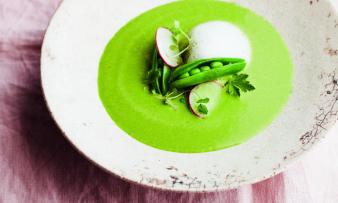
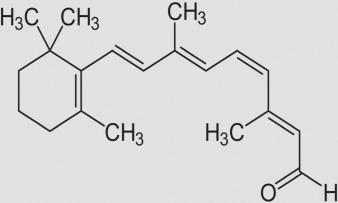




Comments